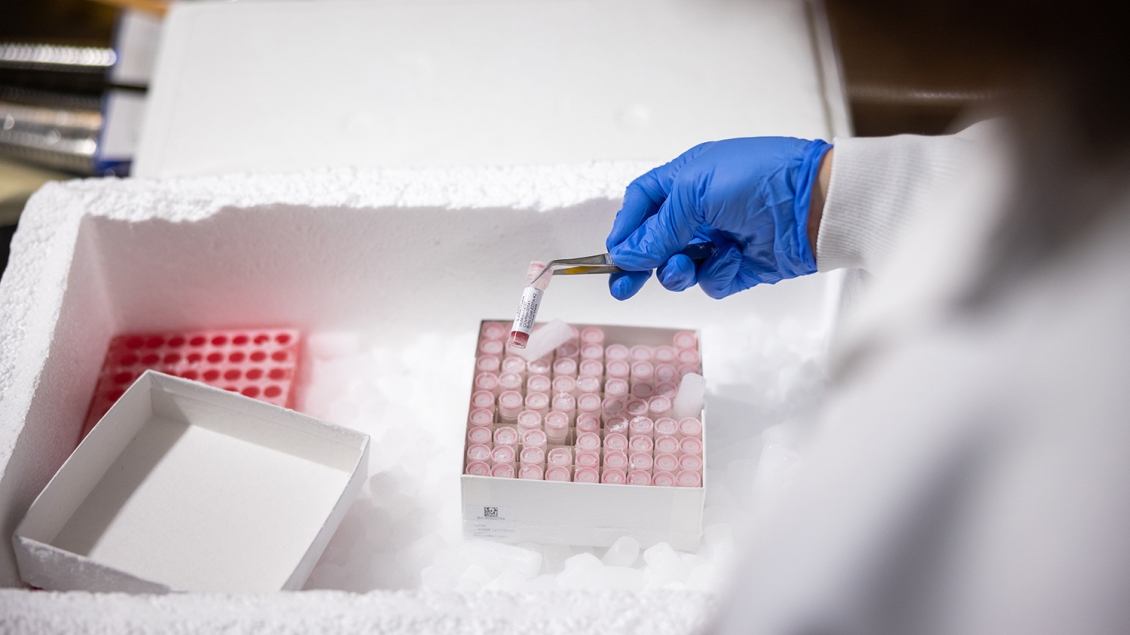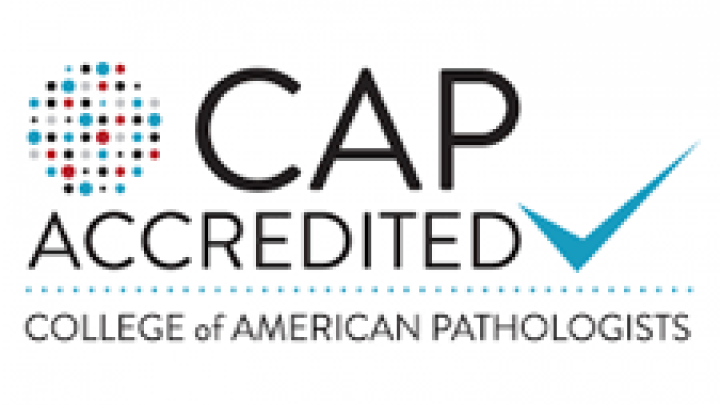
Answers to the CBR questions we hear most from faculty and staff.
Storage and Maintenance of Specimens
The use of the Central Biorepository for biospecimen management is appropriate as part of research programs that include: a cohort of participants, biospecimens, and data intended for multiple purposes, including future unspecified research.
- Use of the biorepository is on a recharge basis. View Service Rates.
- For more information about our policies and procedures, see Regulatory and Governance.
Accessing Stored Biospecimens
For access to samples from a biorepository program at the CBR, please submit a Use Proposal via Qualtrics survey on the Access Biospecimen page on the CBR website, with the following exceptions:
- For access to biospecimens or data collected as part of the Michigan Genomics Initiative, please fill out a custom data request on the Data Office for Clinical and Translational Research webpage.
- To request biospecimens from a multi-site or consortium biorepository (listed below), please visit the study webpage for access procedures.
Contributing Program
- Submit a Request for Prospective Collections.
- Your request will be reviewed according to CBR governance procedures
- If approved, we will initiate an onboarding process. Scheduling is based on the order of submission, bandwidth, and study readiness.
Request Biospecimens
For access to samples from a biorepository program at the CBR, please submit a Use Proposal via Qualtrics survey on the Get Access page on the CBR website, with the following exceptions:
- For access to biospecimens or data collected as part of the Michigan Genomics Initiative, please fill out a custom data request form on the Data Office for Clinical and Translational Research webpage.
- To request biospecimens from a multi-site or consortium biorepository (listed below), please visit the study webpage for access procedures.
- Additional information can be found at Guidance for Writing HUM Applications for Access to Biospecimens Stored at the CBR.
Prospective biorepository collections from Michigan Medicine patients must use the Biorepository Informed Consent Template and Information Pamphlet Template.
If the study has two arms (e.g., a specific research protocol and a biorepository opt-in), then use two consents:
More information can be found at Guidance for Writing HUM Applications for Creating a Biorepository at the CBR.
The CBR has a CoC from the NIH that covers data derived from samples collected for contributing studies.
A study would need their own CoC if there is an arm of the study that is separate from the CBR.
If you have a consent for activities unrelated to the CBR, then you need a CoC to cover that.
For general inquiries and consent/IRB questions, contact [email protected].
For LabVantage questions or to submit a Request for Help (include "LabVantage" in the summary), click here.
The Central Biorepository contains an inventory of over 650,000 biospecimens which include DNA, tissue, plasma, serum, and more. To view a list of current biospecimens being stored by the CBR, click here.
Researchers looking to acquire biospecimen and associated data from the CBR may submit a Use Proposal Form.
Central Biorepository (CBR) offers a variety of services to U-M investigators for the safe and monitored management of biospecimens including temperature-controlled storage, preparation of derivatives from these specimens, aliquoting, distribution, and the production of specimen collection kits. View a price list for CBR services.
Almost certainly. The only situation where you may not need IRB approval is if you were amassing a collection consisting only of biospecimens collected anyway for a clinical purpose, and no links to identifying information will exist. This would require special approval by the CBR Advisory Committee.
In order to obtain IRB approval, you will need to complete a HUM application within eResearch and possibly a REP application.
- HUM applications - for biospecimen collecting activities (e.g. recruitment, informed consent, interaction/interventions with specimen donors).
- REP applications - for collection and future use of human specimens and data (e.g. physical storage, data security, administrative infrastructure).
If you are depositing into the CBR, you usually do not need your own REP application. You can reference the CBR’s REP (REP00000002) within your HUM application through Question 1.1.2.
It may make sense to complete your own REP if:
- You will be storing collected biospecimens in your own lab space, rather than sending them all to the CBR for storage.
- Your collection will include its own special administrative and/or regulatory elements.
IRBMED staff can help you make this decision during review of the HUM application.
Note: This is not an exhaustive set of instructions on how you should complete your HUM application. This information only provides guidance on citing policies and practices related to CBR activities. You may have more information within each section depending on the specifics of your study. Click here to learn more.
- Yes.
- Contact the CBR to get advice and support for your grant, IRB, and other applications before you submit them for review. The CBR may have biospecimens that can support your grant application or make it unnecessary for you to collect new biospecimens. A full inventory of samples stored in the CBR can be found here.
- Complete and submit the Request for Prospective Collection Services form.
- IRB approval must be obtained for all human subjects research.
- More information about IRB requirements can be found on the IRB website and the Research A-Z website.
- The only scenario where it may possible to set up a CBR collection without IRB approval is if your collection consists of biospecimens collected for a clinical purpose and has no linkage to subject-identifying information. This would require special approval by the CBR Governance Committee.
- Establish an Oversight Committee or choose to utilize the CBR Oversight Committee.
- A submittal agreement will be completed with the CBR Customer Project and Service Manager.
Biospecimens donated by CBR participants are available for a broad spectrum of research uses. A full inventory of samples stored in the CBR can be found on our inventory page.
Annotations from the medical record are accessible via DataDirect. This self-serve tool allows users to get counts of CBR participants who meet desired inclusion/exclusion criteria without any regulatory review required.
Additional data (e.g., genetic, survey, epidemiological data, etc.) can be made available from other U-M study teams.
Before you can receive CBR biospecimens, you will need to complete the Use Proposal Form and receive approval from a CBR Oversight Committee.
- If approved, you will be asked to sign a Memorandum of Understanding (MOU) that outlines your use of the materials.
- You will have the option to appeal to the CBR Advisory Committee if you believe your proposal is unreasonably denied.
If you wish to directly access the medical records or identifiable information of participants, you will also need IRB review and approval after Oversight Committee approval.
- Once you have IRB approval you will be able to log back into DataDirect and re-run your query in “PHI mode.” This will allow you to select and download clinical data of interest for the cohort and identify specific biospecimens for distribution.
If you are conducting a study where you will collect additional biospecimens to contribute to the CBR, please refer to the CBR’s “Creating a Biospecimen Collection using the Central Biorepository (CBR)” FAQ block above.
If you are both accessing existing samples and contributing new samples, you may want to fill out two IRB applications: one HUM for the new collection and a second HUM indicating which collections will undergo analysis. IRBMED regulatory staff can help you make this decision.
If you plan to recontact subjects who have their biospecimens stored in the CBR (i.e., in the case of using biospecimens for screening for a new study), you will need to coordinate with the primary study that originally collected samples and obtain proof of previous informed consent.
Note: This is not an exhaustive set of instructions on how you should complete your HUM application. This information only provides guidance on citing policies and practices related to CBR activities. You may have more information within each section depending on the specifics of your study. Please reference your CBR MOU and/or Use Proposal Form to assist with this application. Click here to learn more
This is not an exhaustive set of instructions on how you should complete your HUM application. This information only provides guidance on citing policies and practices related to CBR activities. You may have more information within each section depending on the specifics of your study. Please reference your CBR MOU and/or Use Proposal Form to assist with this application. Click here to learn more
Note: If you plan on storing additional biospecimens within the CBR, refer to the CBR’s “Creating a Biospecimen Collection using the Central Biorepository (CBR)” FAQ block above for more detailed instructions on that activity.
- Yes.
- Use DataDirect to determine how many CBR participants meet your inclusion/exclusion criteria.
- Complete the CBR Use Proposal Form.
- This will undergo review by a CBR Oversight Committee.
- You will have the option to appeal to the CBR Advisory Committee if you believe your proposal is unreasonably denied.
- If approved by the Oversight Committee, you will be asked to sign a Memorandum of Understanding that outlines your use of the materials.
- If you wish to directly access the medical records or identifiable information of participants, you will need to complete a HUM application for IRB review.
- More information about IRB requirements can be found on the IRB website and the Research A-Z website.
- Once approved by the Oversight Committee and the IRB (if needed):
- Submit the list of biospecimens you’d like pulled to the CBR.
- Contact the Data Office for coordinating data delivery.
2800 Plymouth Road
Ann Arbor, MI 48109
Hours of Operation: 7:30 am - 4:30 pm, Monday - Friday
Want to provide feedback? Click here to access a brief survey about your CBR service.

We're Accredited – The Central Biorepository is accredited by the College of American Pathologists (CAP) Biorepository Accreditation Program.